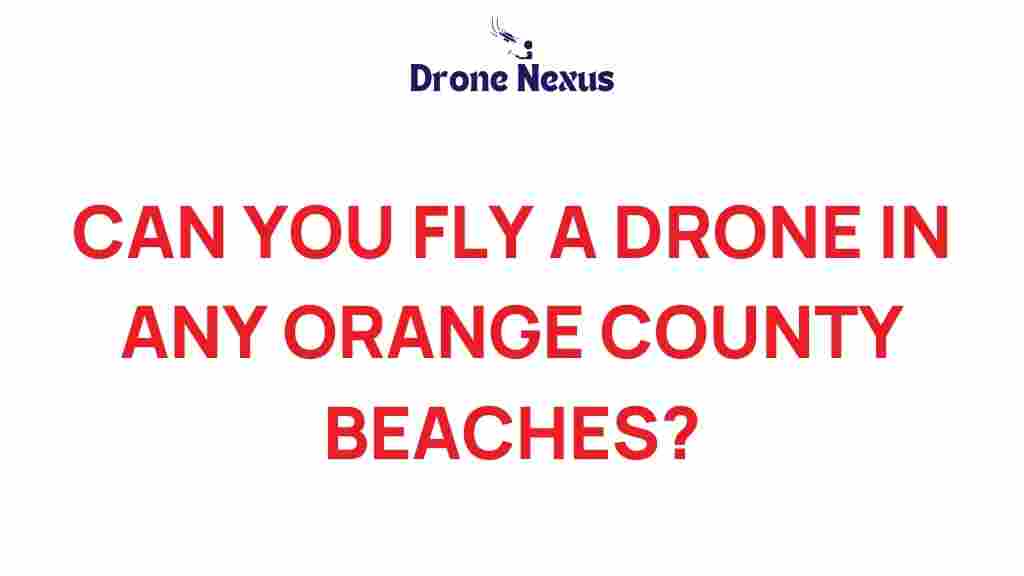Drone Regulations: Understanding the Rules for Flying at Orange County Beaches
As the popularity of drones continues to soar, many enthusiasts are eager to explore the stunning coastal landscapes of Orange County, California. However, before you take to the skies with your drone, it’s vital to understand the drone regulations that govern these beautiful beaches. In this comprehensive guide, we’ll delve into the local rules, the potential consequences of ignoring them, and provide you with tips for flying responsibly.
Why Drone Regulations Matter
Drone regulations are crucial for several reasons:
- Safety: Proper regulations help ensure the safety of both drone operators and the general public.
- Wildlife Protection: Many coastal areas are home to sensitive wildlife that can be disturbed by drone activity.
- Privacy: Respect for personal privacy is essential in public spaces.
Understanding these regulations can prevent accidents and legal issues, allowing everyone to enjoy Orange County’s beautiful beaches.
Overview of Drone Regulations in Orange County
Before flying your drone in Orange County, familiarize yourself with the following regulations:
- Federal Regulations: The Federal Aviation Administration (FAA) regulates drone operations. All drone pilots must register their drones if they weigh more than 0.55 lbs.
- Local Regulations: Many cities within Orange County have specific rules regarding drone use. For example, flying drones in certain parks or beaches may be prohibited.
- California State Laws: California has its own set of regulations that may apply to drone operations, including restrictions on flying over private property without permission.
Step-by-Step Process to Fly Your Drone at Orange County Beaches
Ready to fly your drone? Here’s a step-by-step process to ensure you follow all necessary drone regulations:
1. Research Local Laws
Before heading to the beach, take the time to research the specific regulations for the location you plan to visit. Some popular beaches in Orange County include:
- Huntington Beach
- Newport Beach
- Laguna Beach
- Crystal Cove State Park
Each of these areas may have different rules regarding drone use. For detailed regulations, you can visit the FAA website.
2. Register Your Drone
If your drone weighs more than 0.55 lbs, you must register it with the FAA. Registration is straightforward and can be done online. Make sure to keep the registration number visible on your drone during flights.
3. Check for No-Fly Zones
Some areas are designated as no-fly zones, including:
- Near airports
- Military bases
- Crowded events
Utilize apps like B4UFLY or the FAA’s own tools to check for any restrictions in your chosen area.
4. Follow Weather Conditions
Weather plays a significant role in drone flight safety. Before launching your drone, check for:
- Wind speed and direction
- Rain or storms
- Visibility conditions
Flying in unfavorable weather can lead to accidents and loss of your drone.
5. Respect Privacy and Wildlife
When flying your drone, respect the privacy of beachgoers. Avoid flying over crowds and capturing images of individuals without their consent. Additionally, be mindful of local wildlife, especially during nesting seasons.
6. Maintain Line of Sight
Always keep your drone within your line of sight while flying. This is a crucial part of drone regulations and helps you avoid obstacles and other aircraft.
7. Fly at a Safe Altitude
To ensure safety, abide by the altitude limits set by the FAA, which typically restricts drone flights to a maximum of 400 feet above ground level.
8. Monitor Your Battery Life
Keep an eye on your drone’s battery life to avoid emergencies. Make sure to return your drone to land safely before the battery runs out.
Troubleshooting Tips for Flying Drones at Orange County Beaches
Even with all precautions, issues may arise while flying your drone. Here are some troubleshooting tips:
Lost Signal
If you lose the signal with your drone:
- Stay calm and do not panic.
- Attempt to regain control by moving to a higher ground.
- Use the return-to-home function if your drone is equipped with it.
Battery Issues
If your drone’s battery is draining too quickly:
- Check for weight overload; ensure you’re not carrying too much additional equipment.
- Consider using high-capacity batteries for longer flights.
- Regularly maintain your drone to ensure optimal performance.
Camera Malfunctions
If you experience issues with the camera:
- Make sure the lens is clean and free from obstructions.
- Check your camera settings to ensure they are appropriate for the lighting conditions.
- Restart the drone if necessary.
Conclusion: Enjoying Drone Flights Responsibly
Flying a drone at Orange County beaches can be a thrilling experience, offering breathtaking views and unique perspectives. However, it’s essential to adhere to all drone regulations to ensure safety, protect the environment, and respect the privacy of others. By following the guidelines outlined in this article, you can enjoy your drone adventures while being a responsible operator.
For more information about responsible drone use, check out our detailed guide on drone safety and regulations. Always remember: the sky is not the limit, but your awareness and responsibility are!
This article is in the category Safety and created by DroneNexus Team
